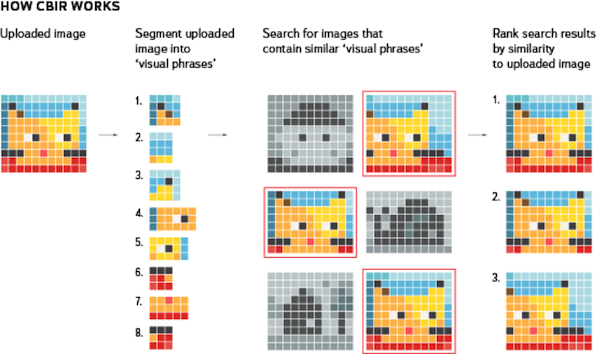Yandex users will now have access to reverse image search, “Sibir,” which is the Russian word for Siberia and also based on the acronym CBIR, which stands for “content-based image retrieval.”
Reverse image search gives results not based on a word search but on a search of visual content. The developers over at Yandex accomplished this creation of computer vision technology, enabling users with a better image search product.
The process starts when a Yandex user submits photos in the form of search queries. It then transforms the photo into numerical representations of the photo’s key features, a process that is referred to as a set of “visual phrases.” Then the search engine sifts through the billions of photos on the Internet to select only images that contain the same visual phrases as the photo that was submitted originally by the user.
In sifting through all the images using the visual phrases, Yandex speeds up the search process by narrowing the scope of the search. Finally the most similar photo will be found due to the computer comparing the submitted photo with the search image’s key features.
Yandex’s whole process of Sibir, from uploading and selecting a photo to returning with search results, will take less than one second to complete.
Sibir was originally announced and released a week ago in Turkey and one year ago in Russia, Kazakhstan, Ukraine, and Belarus.
How Sibir is Useful
Although reverse image searching may not be the most in-demand function of a search engine, Yandex believes it is one that will grow in popularity. Once a user has had the opportunity to utilize the service, it ends up being a necessary tool when uploading or selecting photos via the Internet.
There are many reasons why a user would find Sibir useful and necessary when searching the Internet. The most common situations include authenticity, accurate research, higher photo resolution, copyright infringement, and shopping.
Being able to authenticate a photo with corresponding information or website is vital.
For example, when it comes to social networking or a dating website, with Sibir the user will have access to information that will notify them if the picture of that person wants to befriend you or if what is on their profile is genuine.
Or, when searching for a new apartment that is listed online, Sibir will notify users whether the apartment’s interior photos shown are actually the photos of the apartment. In this situation, the user searching for an image will have ease of mind knowing that the photos being shown to them are genuine and real.
Delivering accurate information is also key in the search; if a user submits a photo of an unidentified object, the search will come back with information on that photo. An example of this would be submitting a photo of a rosemary plant. The search will give the correct description of the rosemary plant as opposed to a sage plant.
Whether you’re a student or a professional, there comes a point in any career when creating a presentation, proposal, or report requires photos. Needing a photo or image is also true for Web-based or various publications, including but not limited to books, magazines, and newspapers.
Reverse image search can allow the user to find the proper photo required with the highest resolution without having to crop the photo. For the photography and art industries, Sibir will enable access to knowledge of copyright infringement. Artists and photographers alike will be able to search their own work and locate if it has been duplicated elsewhere and collect on any missing royalties they may have.
Lastly, this new search feature will likely be utilized by consumers for ecommerce sites. Shoppers can upload a photo of, for example, a pair of women’s shoes and be able to locate where those shoes are sold. Following your favorite fashion blogger and wanting to buy the newest fashion trends just became that much easier.

